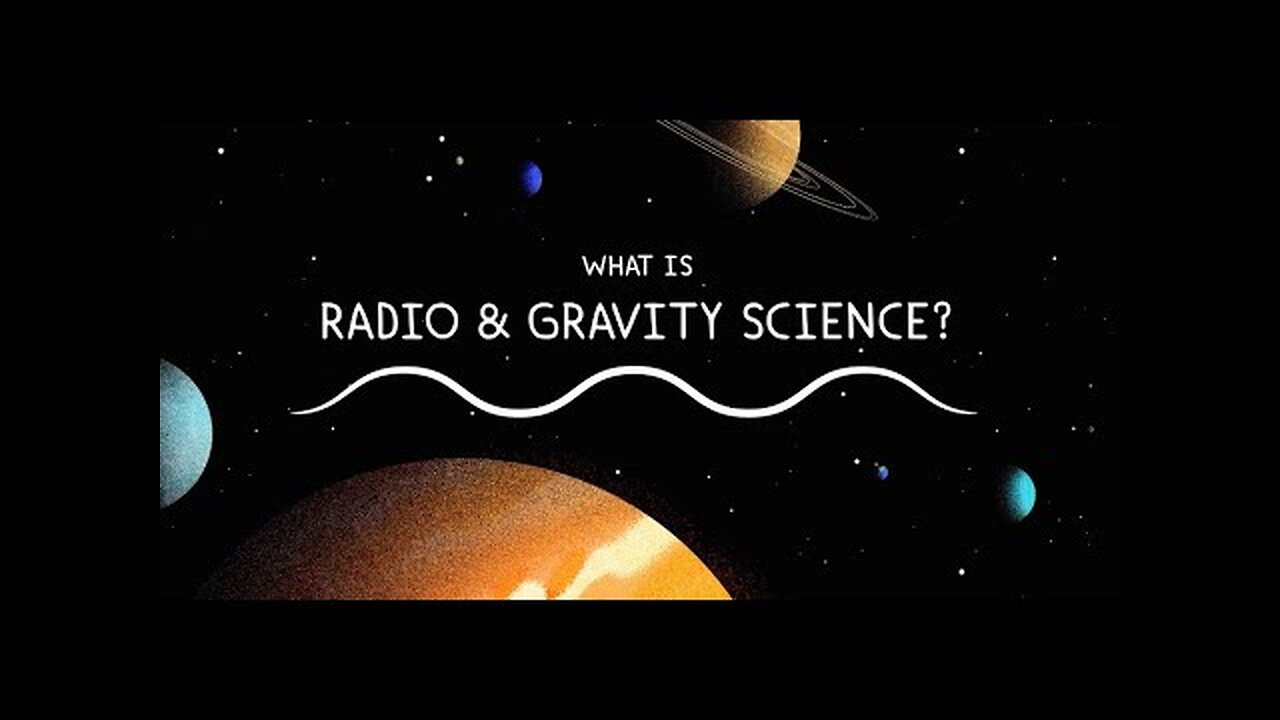Premium Only Content

NASA's Gravity and Radio Wave Exploration
NASA's Deep Space Network, an international array of colossal radio antennas, serves as a vital conduit for communicating with spacecraft exploring the Moon and the far reaches of our celestial neighborhood. Once a spacecraft reaches its destination, it relies on these radio antennas to establish contact with the Deep Space Network, which reciprocates by transmitting radio signals back to the spacecraft.
As spacecraft meticulously traverse their designated paths around their target, they emit radio signals. Scientists and engineers utilize the Doppler effect, the same principle that alters the sound of a siren approaching or receding, to gauge the spacecraft's position and velocity. The Doppler effect manifests as the spacecraft and Deep Space Network antenna move relative to each other. Discrepancies in the radio signal frequency between what's transmitted by the spacecraft and received on Earth yield valuable insights into the gravitational field of a planetary body.
By constructing a model of a planetary body's gravitational field, akin to mapping its gravitational shape, scientists and researchers glean invaluable data about its internal composition. Developed and overseen by NASA's Jet Propulsion Laboratory (JPL) in Southern California, the Deep Space Network's antennas stand as an irreplaceable bridge to robotic explorers venturing beyond Earth. They serve as the linchpin for spacecraft command and data reception, supplying unprecedented images and scientific knowledge, propelling our comprehension of the cosmos, our solar system, and ultimately, our position in the universe
-
 2:48
2:48
Steven Crowder
22 hours agoCROWDER CLASSICS: What’s This? | Nightmare Before Kwanzaa (Nightmare Before Christmas Parody)
242K12 -
 33:49
33:49
Quite Frankly
18 hours agoThe Christmas Eve Midnight Telethon
60.2K7 -
 2:12:46
2:12:46
Price of Reason
18 hours agoAmber Heard BACKS Blake Lively Lawsuit Against Justin Baldoni! Is Disney CEO Bob Iger in TROUBLE?
17.8K8 -
 1:01:17
1:01:17
The StoneZONE with Roger Stone
12 hours agoChristmas Edition: Why the Panama Canal is Part of the America First Agenda | The StoneZONE
94.5K31 -
 18:12:15
18:12:15
LFA TV
23 hours agoLFA TV CHRISTMAS EVE REPLAY
117K14 -
 4:33:48
4:33:48
tacetmort3m
1 day ago🔴 LIVE - THE ZONE KEEPS PULLING ME BACK - STALKER 2 - PART 15
61.5K12 -
 22:45
22:45
Brewzle
20 hours agoI Went Drinking In A Real Bourbon Castle
43.4K4 -
 48:36
48:36
PMG
1 day ago $3.71 earned"Parkland Parent Speaks Out On Kamala Harris Using Victims"
35.4K8 -
 4:06
4:06
The Lou Holtz Show
18 hours agoCoach Lou Holtz’s Heartfelt Christmas Message 🎄 | Family, Faith & Notre Dame Spirit 💚 #christmas
26.2K -
![ROSEANNE BARR - Her Journey, TRUMP, and the MAGA GOLDEN AGE! [INTERVIEW]](https://1a-1791.com/video/s8/1/M/m/B/2/MmB2v.0kob.1-small-ROSEANNE-BARR-Her-Journey-T.jpg) 51:35
51:35
Dr Steve Turley
1 day ago $20.32 earnedROSEANNE BARR - Her Journey, TRUMP, and the MAGA GOLDEN AGE! [INTERVIEW]
60.7K54